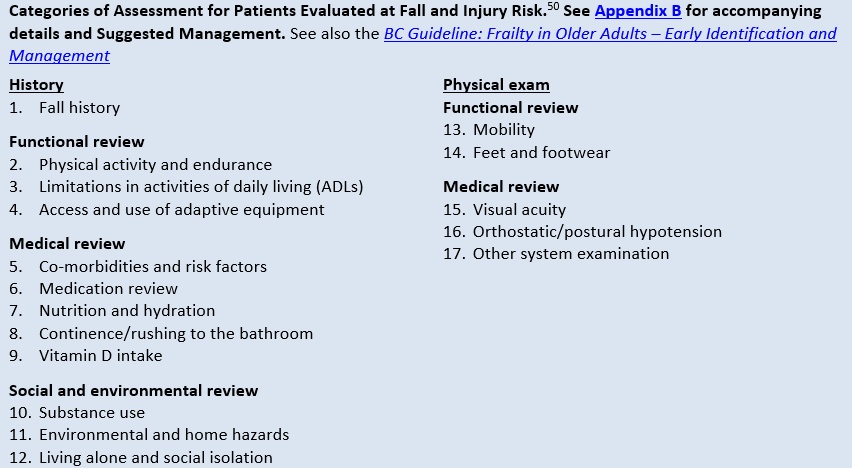Not known Incorrect Statements About Dementia Fall Risk
The Best Guide To Dementia Fall Risk
Table of ContentsDementia Fall Risk Fundamentals ExplainedThings about Dementia Fall RiskNot known Factual Statements About Dementia Fall Risk The Single Strategy To Use For Dementia Fall Risk
A loss danger evaluation checks to see how most likely it is that you will certainly fall. The evaluation typically includes: This includes a series of questions concerning your overall wellness and if you have actually had previous drops or issues with equilibrium, standing, and/or walking.Interventions are suggestions that might decrease your danger of dropping. STEADI includes 3 steps: you for your threat of falling for your risk variables that can be improved to attempt to protect against falls (for example, balance issues, damaged vision) to decrease your danger of falling by using efficient approaches (for instance, offering education and resources), you may be asked numerous concerns including: Have you dropped in the previous year? Are you stressed regarding dropping?
If it takes you 12 seconds or more, it may mean you are at higher threat for a loss. This test checks toughness and equilibrium.
Move one foot midway onward, so the instep is touching the big toe of your various other foot. Move one foot totally in front of the other, so the toes are touching the heel of your other foot.
More About Dementia Fall Risk
Many falls take place as an outcome of numerous adding elements; as a result, handling the threat of dropping begins with recognizing the aspects that contribute to fall danger - Dementia Fall Risk. A few of one of the most appropriate danger elements consist of: Background of prior fallsChronic medical conditionsAcute illnessImpaired gait and balance, reduced extremity weaknessCognitive impairmentChanges in visionCertain high-risk medications and polypharmacyEnvironmental variables can additionally increase the danger for falls, consisting of: Insufficient lightingUneven or harmed flooringWet or slippery floorsMissing or damaged hand rails and order barsDamaged or improperly fitted devices, such as beds, wheelchairs, or walkersImproper use assistive devicesInadequate guidance of the people residing in the NF, including those who exhibit aggressive behaviorsA effective fall risk administration program requires a detailed professional evaluation, with input from all members of the interdisciplinary team
.png)
The treatment strategy should likewise include interventions that are system-based, such as those that promote a secure setting (suitable lighting, hand rails, get bars, etc). The performance of the interventions should be reviewed periodically, and the care strategy changed as required to reflect adjustments in the loss threat analysis. Implementing a fall threat management system using evidence-based best practice can minimize the occurrence of falls in the NF, while limiting the potential for fall-related injuries.
All about Dementia Fall Risk
The AGS/BGS guideline suggests evaluating all grownups aged 65 years and older for loss risk annually. This testing is composed of asking clients whether they have dropped 2 or more times in the past year or sought medical focus for an autumn, or, if they have not fallen, whether they really feel unstable when strolling.
People who have actually dropped as soon as without injury ought to have their balance and stride reviewed; those with stride or equilibrium abnormalities ought to receive added assessment. A history of 1 loss visit site without injury and without gait or balance issues does not necessitate further evaluation past continued yearly autumn danger screening. Dementia Fall Risk. A loss threat analysis is required as part of the Welcome to Medicare evaluation

Dementia Fall Risk Things To Know Before You Get This
Documenting a falls background is just one of the quality signs for autumn avoidance and monitoring. An essential part of threat evaluation is a medicine review. Several classes of drugs enhance autumn risk (Table 2). Psychoactive medicines particularly are independent predictors of falls. These medicines have a tendency to be sedating, change the sensorium, and harm balance and gait.
Postural hypotension can frequently be alleviated by minimizing the dose of blood pressurelowering medications and/or stopping medicines that have orthostatic hypotension as a negative effects. Use of above-the-knee assistance hose pipe and sleeping with the head of the bed raised may likewise reduce postural decreases in blood pressure. The recommended aspects of a fall-focused physical exam are shown in Box 1.

A TUG time greater than or equivalent to 12 seconds suggests high fall threat. Being incapable weblink to stand up from a chair of knee elevation without making use of one's arms shows raised autumn risk.